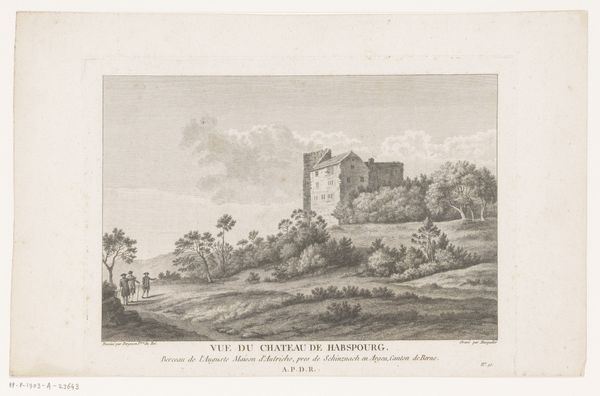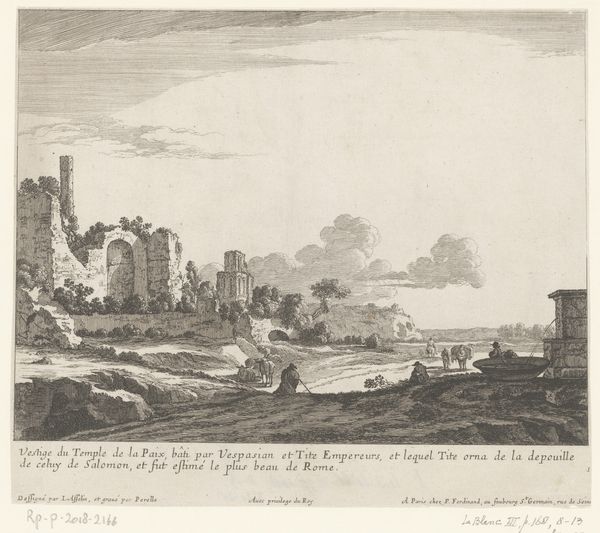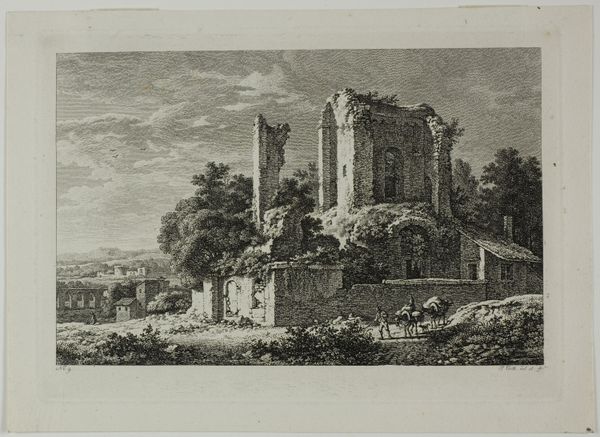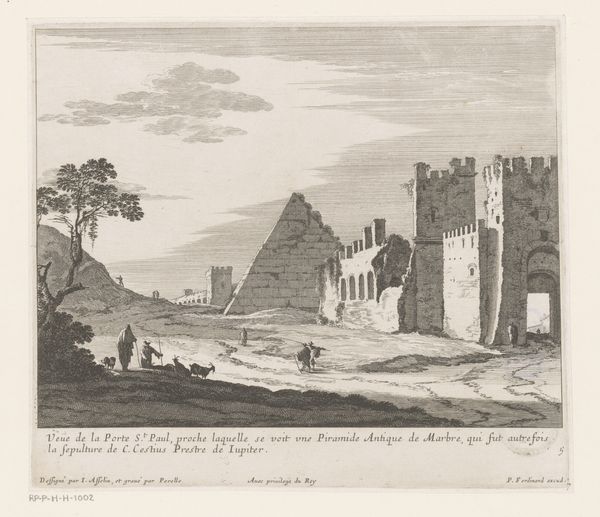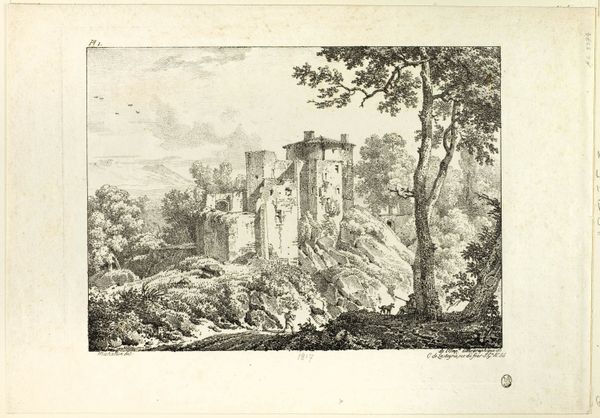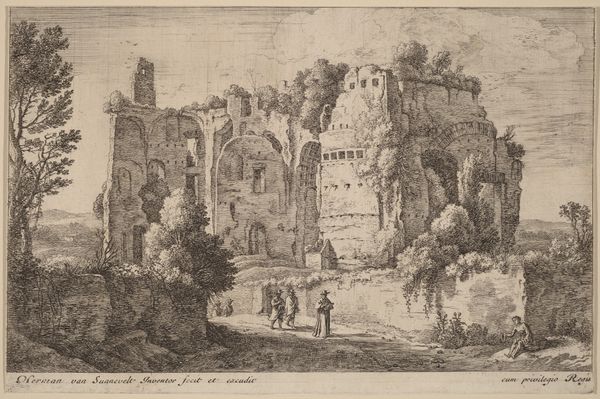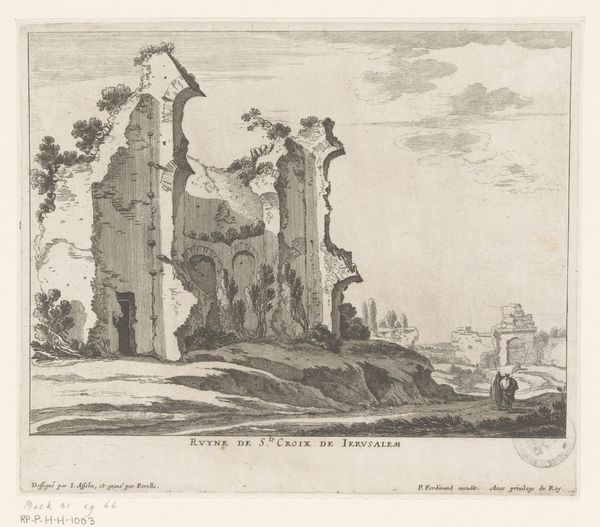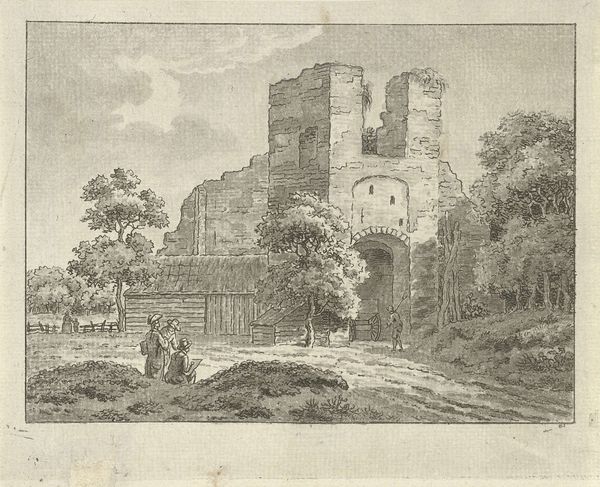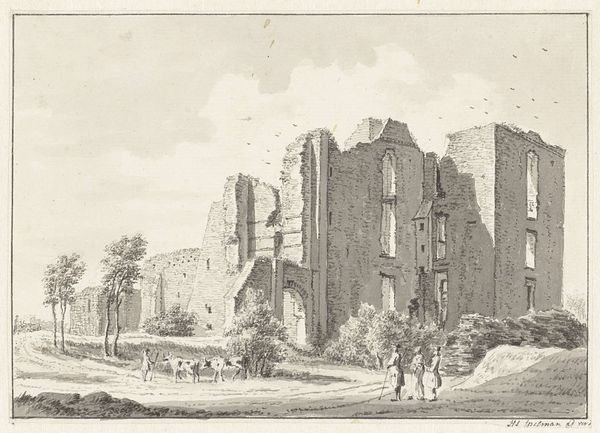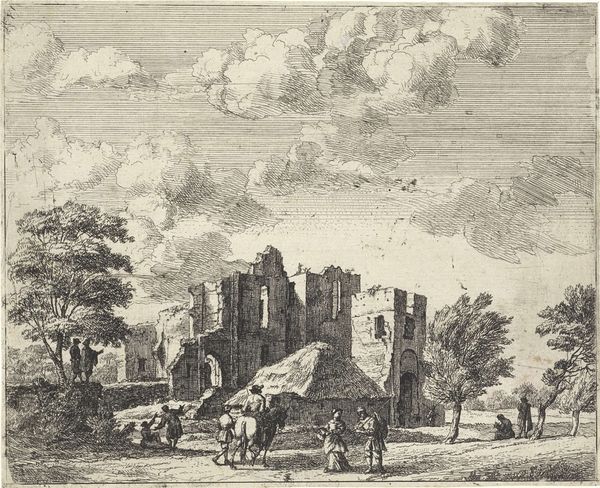
drawing, print, etching, ink, engraving
#
drawing
#
light pencil work
#
baroque
# print
#
pen sketch
#
etching
#
old engraving style
#
landscape
#
house
#
romanesque
#
personal sketchbook
#
ink
#
sketchwork
#
ink drawing experimentation
#
pen-ink sketch
#
pen work
#
sketchbook drawing
#
cityscape
#
storyboard and sketchbook work
#
engraving
Dimensions: height 216 mm, width 255 mm
Copyright: Rijks Museum: Open Domain
Nicolas Perelle rendered this print of the ruins of Cicero's house in Rome sometime before 1695. Here, ruins are more than just physical remnants; they are potent symbols of lost grandeur. They speak to the transient nature of human achievement. We can see how the ruined house itself becomes a commentary on the passage of time and the impermanence of even the greatest human endeavors. This motif, a powerful one, reappears throughout art history. Think of the Romantic painters, like Caspar David Friedrich, who used ruins to evoke feelings of melancholy and the sublime. Consider the psychological weight of these ruins. They are a stark reminder of mortality, prompting reflection on the cyclical nature of rise and fall. The way we continue to depict these ruins shows a collective fascination with decay, not just physical but also societal and personal. The cyclical journey of symbols shows how the past is continually reinterpreted, echoing through art and culture.
Comments
No comments
Be the first to comment and join the conversation on the ultimate creative platform.
